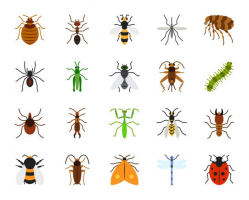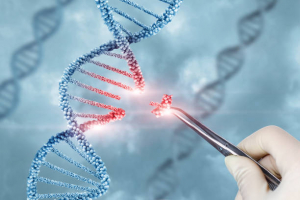Top 13 Questions About Aquatic Animals Answered
An aquatic animal is any animal, invertebrate or vertebrate, that spends the majority or all of its existence in water. Many insects, including mosquitoes, ... read more...mayflies, dragonflies, and caddisflies, have water larvae that develop into winged adults. Aquatic creatures may breathe air or collect oxygen from water via specialized organs known as gills or directly through their skin. Natural settings and the species that inhabit them are classified as aquatic (water) or terrestrial (land). Now let's take a look at the questions about aquatic animals answers.
-
The biggest mammal is the blue whale, which swims in all of the world's seas. The biggest blue whale ever reported was at least 110 feet (33.5 meters) long and weighed 209 tons (189,604 kilograms). Males have an average length of 82 feet (25 meters) while girls have an average length of 85 feet (26 meters). A baby blue whale may weigh 2.5 to 4 tons (2,268 to 3,628 kg), whereas an adult blue whale can weigh 100 to 120 tons. Whale calves consume 50 to 150 liters of their mothers' milk per day, gaining around 8 pounds (3.6 kilograms) each hour, or 200 pounds (90.7 kilograms) per day.
When the calf is weaned at around eight months of age, it is close to 50 feet (15.2 meters) long and weighs about 25 tons (22,679 kilograms). Blue whales have no teeth. Instead, they have hundreds of rows of baleen plates in their upper jaw: flat, flexible plates with ragged edges stacked in two parallel rows that resemble thick hair combs. Blue whales eat krill, which is a little shrimp-like invertebrate.
Large marine animals, such as whales and dolphins, are thought to have brains similar to humans. They can communicate, follow directions, and adjust to new situations. Blue whales have been targeted for their baleen and blubber (fat) throughout history, and they are now considered an endangered species. The global blue whale population is estimated to be in the hundreds to tens of thousands, however it is a small fraction of what it was before hunting.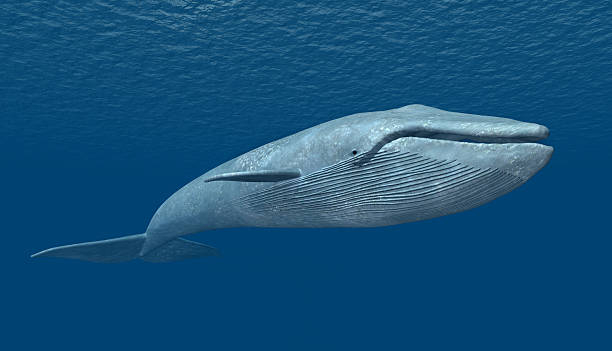
istockphoto https://www.youtube.com/watch?v=94Otd0Az4Cc -
The walrus (Odobenus rosmarus) is a huge flippered marine mammal found in the Arctic Ocean and subarctic waters of the Northern Hemisphere, having a discontinuous distribution around the North Pole. The walrus's two tusks—actually two long, sharp teeth—help the cold-water species fight polar bears, defend itself from other walruses, and move across the ocean floor in pursuit of its preferred meal, clams. The "tooth walker" momentarily fixes itself to the ocean floor by digging its tusks into the muddy sand in search of food. It then retracts its tusks, walks forward, and continues the procedure.
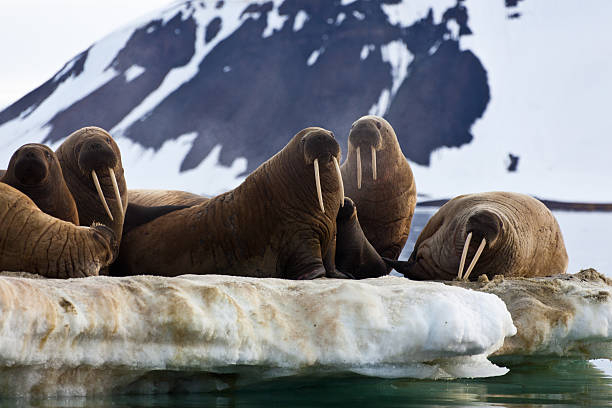
istockphoto 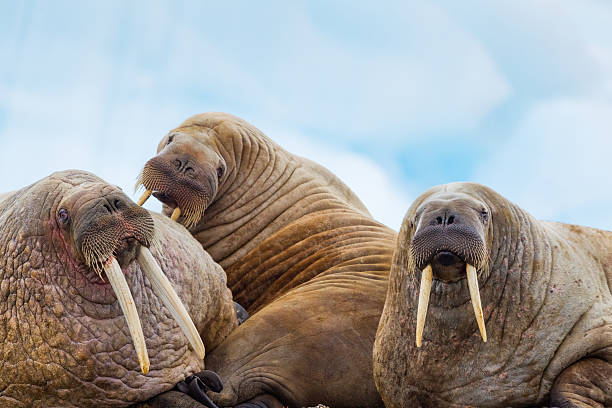
istockphoto -
Sharks have an excellent sense of smell. They may do so because of their nostrils or nares, which are located beneath their snouts. The nares are just there to smell, not to breathe. Even though the chances of being killed by sharks are only one in three million, the dread of the predator is rising. Because of the movie industry and popular culture, many believe sharks can smell a little drop of blood from miles away. Sorry to burst your bubble, but this "fact" is simply false. Sharks indeed have a high sense of smell, although popular belief about it is overblown.
Some sharks can smell your blood from a quarter-mile away, but it takes time for the stench to reach them. Scents travel via the currents to reach a shark, and it takes time for the aroma to reach the shark's nose. It is also affected by the motion of the ocean. The faster it is, the faster the scent will go to or away from the shark.
If you are hurt and bleed while swimming in the water, you have plenty of time to swim safely to the beach before any shark decides to strike. However, if you are still concerned about being attacked by the predator, you should be aware that, contrary to popular opinion. Sharks are not very fond of human flesh; in fact, they are picky eaters. Lemon sharks, for example, enjoy eating bony fish, crabs, and mollusks. They may eat seabirds and small sharks. Humans, on the other hand, are not even on their menu.
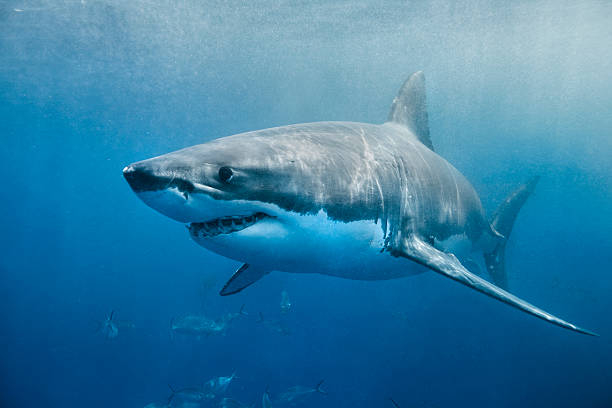
istockphoto https://www.youtube.com/watch?v=_044IGEuiYI -
Fish spend their whole lives underwater, yet they require oxygen to breathe. They do not require air to breathe and get oxygen from water. They require a significant volume of water to flow through the absorption surfaces utilizing their mouths and gills in order to acquire adequate oxygen into their bodies. All of the fish's body components function as a pump to keep water circulating across the gill surfaces for absorption.
The respiratory system is the mechanism that allows gas exchange between the water and the fish. This mechanism is critical for many of the fundamental processes that fish conduct. All fish, like us (humans), breathe in oxygen and expel carbon dioxide. However, this breathing in and out is only possible because of the oxygen found in water. Fish take in water via their mouths and then expel it through their gills. The oxygen in water is absorbed, and subsequently carbon dioxide is released in water, which exits the body via the gills.
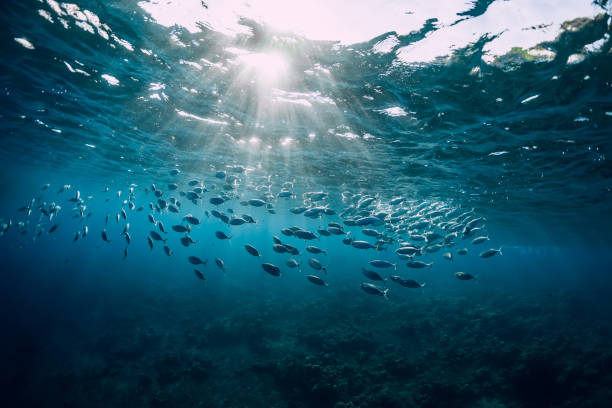
istockphoto https://www.youtube.com/watch?v=B-T4ORXLgLI -
Yes, for a limited time. Every year, the mangrove killifish spends many months out of the water, dwelling underneath decaying branches and tree trunks. The 2-inch (5-centimeter) long fish generally dwells in muddy pools and flooded crab burrows in Florida, Latin America, and the Caribbean mangrove swamps. When their pools of water dry up, they temporarily modify their gills to store water and nutrients while excreting nitrogen waste through their skin. When they return to the water, these modifications are reversed. The mangrove killfish is not the only fish that can live in the absence of water.
Southeast Asia's walking catfish possesses gills that allow it to breathe both air and water. The enormous mudskippers of Southeast Asia breathe underwater through their gills and on land by receiving oxygen through their skin and the back of their mouth and throat. Several fish are amphibious, which means they can exist outside of water, according to Andy Turko of the University of Guelph in Ontario, Canada.
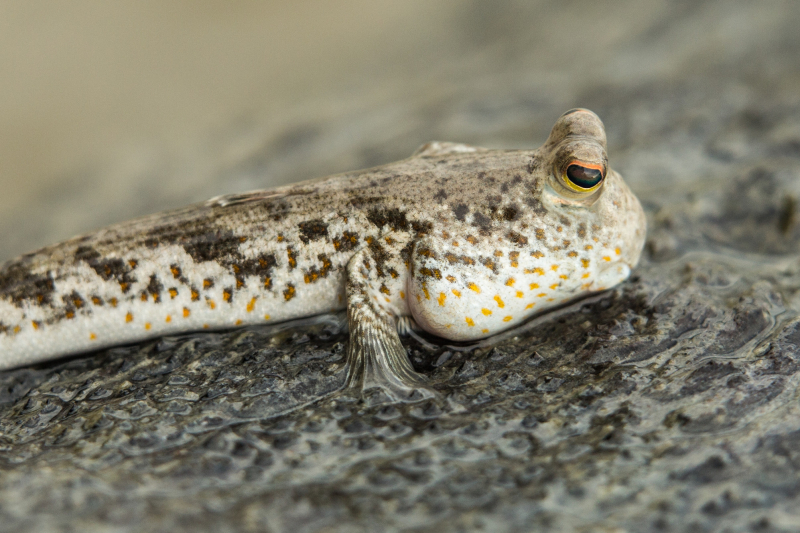
istockphoto https://www.youtube.com/watch?v=4eHXXpCM2I4 -
People called one family of fish that can fly the flying fish. The Exocoetidae are a family of flying fish that includes around 40 distinct species. The main distinction between the genera is the number of wing-like fins they have. Scientists believe the fish gained the capacity to fly in order to avoid maritime predators such as tuna.
Flying fish may expand and stiffen their big fins like wings and propel themselves into the air for short distances in the warm waters of the Atlantic and Pacific Oceans. Because of the fast movement and vibration of its tail fin, a flying fish may glide through the air for at least 30 seconds and reach speeds of up to 40 miles per hour. The fish adds velocity to its "flight" by thrusting its vibrating tail into the water. Flying fish can be observed gliding over waves to avoid predators such as albacore or blue fish, or to avoid a collision with a boat. There are around 40 different types of flying fish.
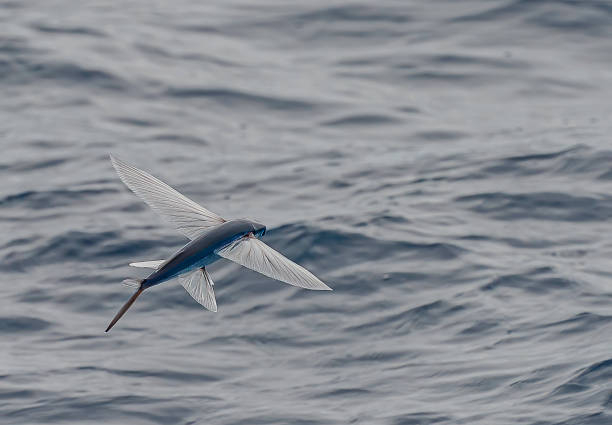
istockphoto https://www.youtube.com/watch?v=bk7McNUjWgw -
Certain fish generate electricity to either kill or protect themselves. The electric eel, a long-bodied South American fish, may grow to be 9 feet (2.75 meters) long and weigh about 50 pounds (22.7 kilograms). The electric eel swims across slow-moving water in search of prey. It needs to emerge to the surface every few minutes because it breaths air. The electric eel's organs are formed of electric plates that span the length of its tail, which accounts for the majority of its body length. This toothless eel stuns its food with electric shocks, most likely to protect its mouth from the struggling, spiny fish it is attempting to devour.
The eel shocks the fish with a series of quick electrical charges, briefly paralyzing it so the eel can swallow it. The electrical charge can range from 300 to 600 volts, which is enough to startle a human. Electric rays feature two kidney-shaped organs that create and store power in the same way as a battery does. A huge Atlantic torpedo ray may deliver a 220 volt shock to paralyze its target before devouring it. Electric rays utilize their electric organs to communicate with one another as well as to shock potential victims and dissuade potential predators. The electric catfish of Africa, like the rays, delivers an electric shock of up to 400 volts, which it employs for self-defense and prey capture. Mormyrids, which dwell in murky waters in West Africa, use electrical impulses as a type of radar to navigate and find food.
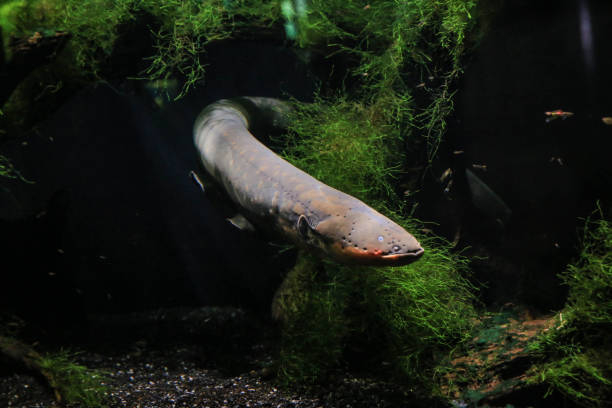
istockphoto https://www.youtube.com/watch?v=z0M7_HPSi14 -
Porcupinefish are members of the family Diodontidae (order Tetraodontiformes), and are also known as blowfish, balloonfish, and globefish. They are often referred to as pufferfish, although this is not to be mistaken with the visually similar and closely related Tetraodontidae, which are more usually referred to as pufferfish. Most of the time, porcupine fish and puffer fish appear to be ordinary fish.
They ingest water and inflate their bodies into a ball form, up to five times their regular size, when threatened by another fish or detect danger. Predators are scared away when they notice this, and their expanded size makes it harder for larger predators to devour them. When the fish realizes there is no longer any threat, it gradually deflates.
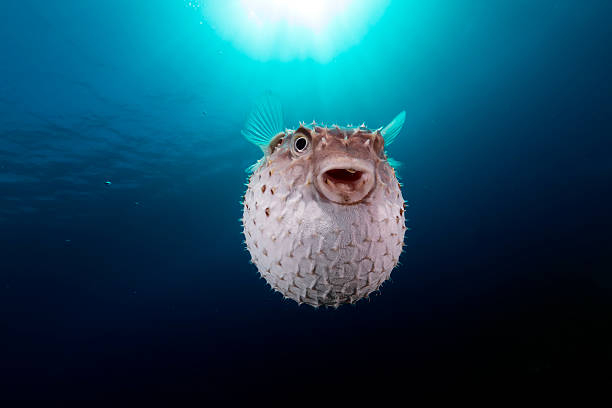
istockphoto https://www.youtube.com/watch?v=TkrSy3p40d4 -
Yes, the salmon's life cycle is well-known. It is born in little streams far from the sea and spends the first few years of its existence in freshwater. It migrates down streams to rivers in the spring, sometimes journeying hundreds of kilometers, until it reaches the open ocean, where it spends the majority of its adult life. When it is time to deposit its eggs, the salmon returns to its birthplace to spawn and die. Salmon have oil-rich bodies that they gather up when swimming in the water. The oil provides the salmon with the energy it requires to make its way upriver.
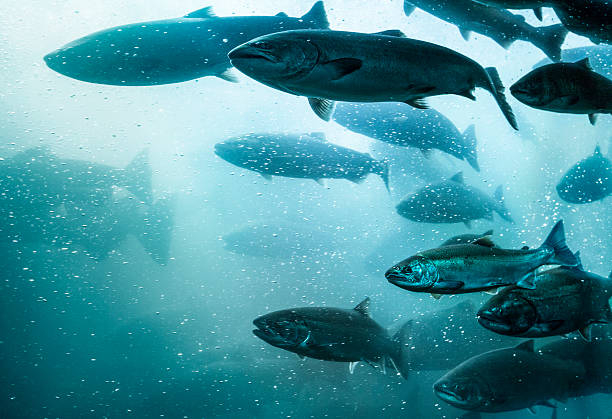
istockphoto https://www.youtube.com/watch?v=aPf4qtCDRtE -
Hermit crabs are anomuran decapod crustaceans of the superfamily Paguroidea that have adapted to enter empty scavenged mollusk shells in order to preserve their vulnerable exoskeletons. There are approximately 800 species of hermit crabs, the majority of which have an asymmetric abdomen hidden by a tight-fitting shell. Due to the flimsy abdominal exoskeleton of hermit crabs, they must inhabit shelter generated by other species or risk becoming vulnerable. Hermit crabs, unlike other crabs, have soft exoskeletons (outer coverings).
Their fragile bodies require shelter from the harsh conditions of underwater existence, as well as a safe haven from predators. They burrow into abandoned seashells to live. Because of its flexible body, the crab may twist and transform into a curled shell, leaving only its claws exposed. As it crawls down the ocean floor, a hermit crab will carry the shell on its back. When it outgrows its current shell, it goes on to a larger one.
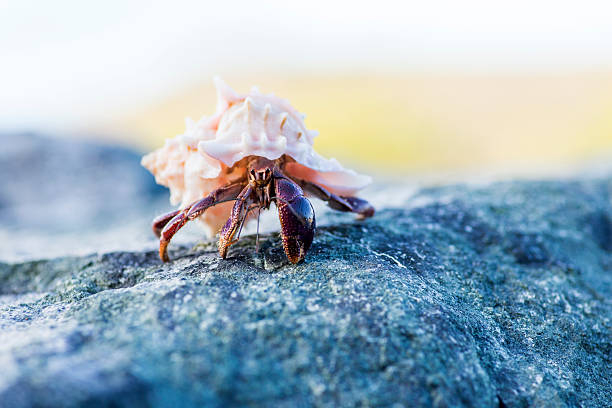
istockphoto https://www.youtube.com/watch?v=kkUdUkbtUto -
Corals are marine invertebrates of the phylum Cnidaria's class Anthozoa. They usually form dense colonies of several identical individual polyps. Corals are reef builders that live in tropical waters and produce calcium carbonate to form a strong skeleton. A coral "group" is a colony of polyps that are all genetically similar. Each polyp is a sac-like animal with a diameter of a few millimeters and a height of a few centimeters. Tentacles around a central mouth hole. Near the base of each polyp, an exoskeleton is excreted. Over several generations, the colony builds a species-specific skeleton that can reach several meters in length.
Individual colonies expand by polyp asexual reproduction. Corals also reproduce sexually through spawning: polyps of the same species release gametes at the same time, usually around a full moon. Fertilized eggs develop into planulae, a mobile early form of the coral polyp that settles to create a new colony when mature. Although some corals use stinging cells on their tentacles to gather plankton and tiny fish, most corals get the majority of their energy and nutrients from photosynthetic unicellular dinoflagellates of the genus Symbiodinium that dwell within their tissues. These are known as zooxanthellae and are responsible for the coral hue.
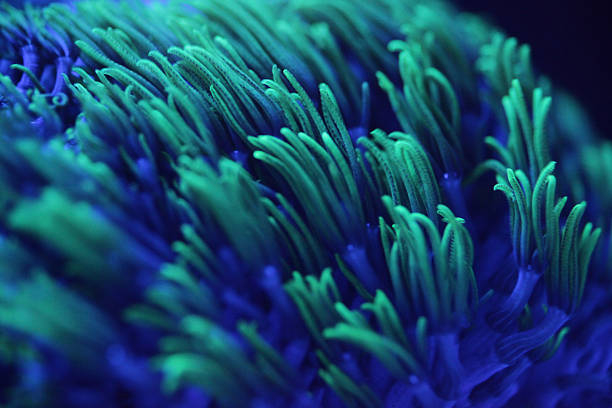
istockphoto https://www.youtube.com/watch?v=UkkfAzswGI8 -
A seahorse is any of the 46 tiny marine fish species in the genus Hippocampus. Seahorses have a horse-like head and neck, as well as segmented bone armour, an erect stance, and a coiled prehensile tail. The male seahorse cares for the female's fertilized eggs in a pouch on the front of his belly, which functions similarly to a female mammal's womb. The female seahorse lays 100 or more eggs in the pouch of the male. The male fertilizes the eggs by releasing sperm into the pouch. The fertilized eggs develop in the pouch's wall and are covered in a fluid that supplies nutrition and oxygen.
The eggs hatch after two to six weeks (depending on the species), and the male seahorse gives birth to live offspring as little as 0.04 inch (1 centimeter) long. Seahorses are mostly found in shallow tropical and temperate salt water, from roughly 45°S to 45°N. They prefer protected environments like seagrass beds, estuaries, coral reefs, and mangroves. From North America to South America, four species can be found in Pacific seas.
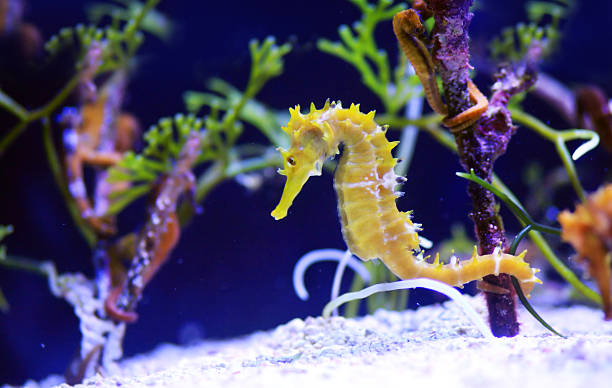
istockphoto https://www.youtube.com/watch?v=b_nEA3dtOZs -
Dolphins and porpoises are cetaceans, or marine animals related to whales. Dolphins are members of the Delphinidae family and can grow to be up to 30 feet long. Porpoises of the Phocoenidae family are smaller and stouter, with further structural changes. Despite the fact that both species are highly intelligent, dolphins are thought to be more gregarious and live in bigger, more stable groups. Although the terms "dolphin" and "porpoise" are sometimes used interchangeably, the name "porpoise" should only apply to the Phocoenidae family, which contains seven porpoise species.
The fundamental anatomical distinctions between dolphins and porpoises are anatomical. Looking at the skull and dorsal fins, one can determine the difference between the two creatures. Dolphins often have a "beak" which gives them the appearance of being "long-nosed", but porpoises do not have a beak and so seem more "flat-faced". Dolphins' dorsal fins are normally curled or hooked, whereas porpoises are more triangular in form. Close inspection reveals that dolphins have cone-shaped teeth, whereas porpoises have flat or spade-shaped teeth.
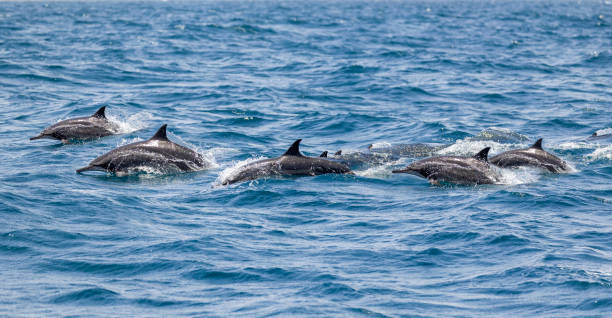
istockphoto https://www.youtube.com/watch?v=Mqhe0WtPnCo
























